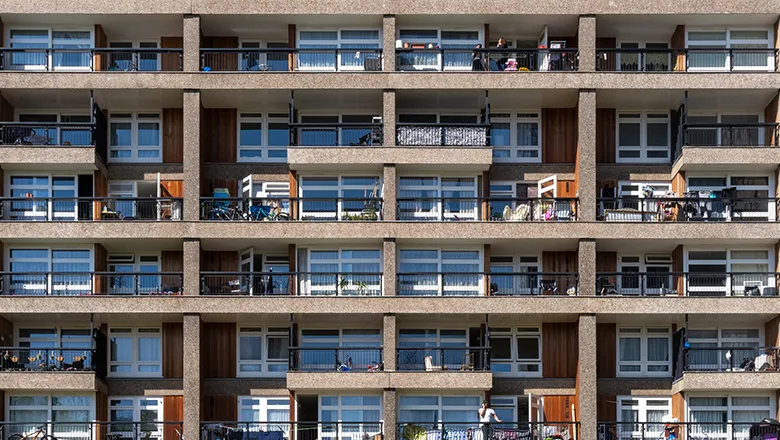20 October 2021
Has the pandemic pushed a stretched social housing system to breaking point?
Rebecca Benson and Susannah Hume
How did supply and demand of social housing shift during the pandemic?

Demand & supply in social housing: what changed during COVID-19?
Fears that pandemic-driven increases in financial precarity would put even more pressure on the already stretched social housing system did come to pass, at least in the first year of the pandemic.
In our research with Home Connections and Campbell Tickell, we looked at all the properties advertised for choice based letting in 26 English local authorities between February 2019 and 22 March 2020 (the year before the pandemic), and between 23 March 2020 and March 2021 (the first year of the pandemic). Across England the average number of bids each property received was the same in both years, telling us that, overall, demand did not increase.
Although the picture did not change overall, there were some areas where demand shifted during the pandemic. In Greater London, for example, the average number of bids each property listed on Home Connections received increased from 254 before the pandemic to 277 during. There were also areas where demand decreased, with properties listed on Home Connections in the East of England receiving on average 67 bids before the pandemic and 49 during.
The pattern differed by property size too, with smaller properties seeing an increased number of bids – for studios, 62 before vs 82 during – and two- and three-bedroom properties seeing reductions – 136 vs 120 and 140 vs 130 respectively. This suggests that households in London and single- or two-person households were particularly vulnerable to being impacted by the pandemic.
Our data only covered the period to March 2021. Since then, policies to protect peoples’ incomes, like the furlough scheme and universal credit uplift, have come to an end. This means there may be large numbers of people who are about to be financially worse off, and this could lead to increased demand in the social housing system.
More broadly, just because things didn’t get worse overall during the first year of the pandemic doesn’t mean the system is functioning well. During the two years we studied the average number of bids each property received was at least 120, and at times as high as 160. The only exceptions were April and May 2020, when both supply and demand plunged. This tells us that there is simply not enough social housing for the level of need. For some types of properties and in some places, the situation is even more severe.
Of course, we did not need new research to tell us that there are not enough social homes available. The lack of social housing, part of a wider crisis of housing affordability and quality, is not new. As we recover from the pandemic, we cannot “build back better” or “level up” while large numbers of households do not have access to safe, secure homes that meet their needs.
